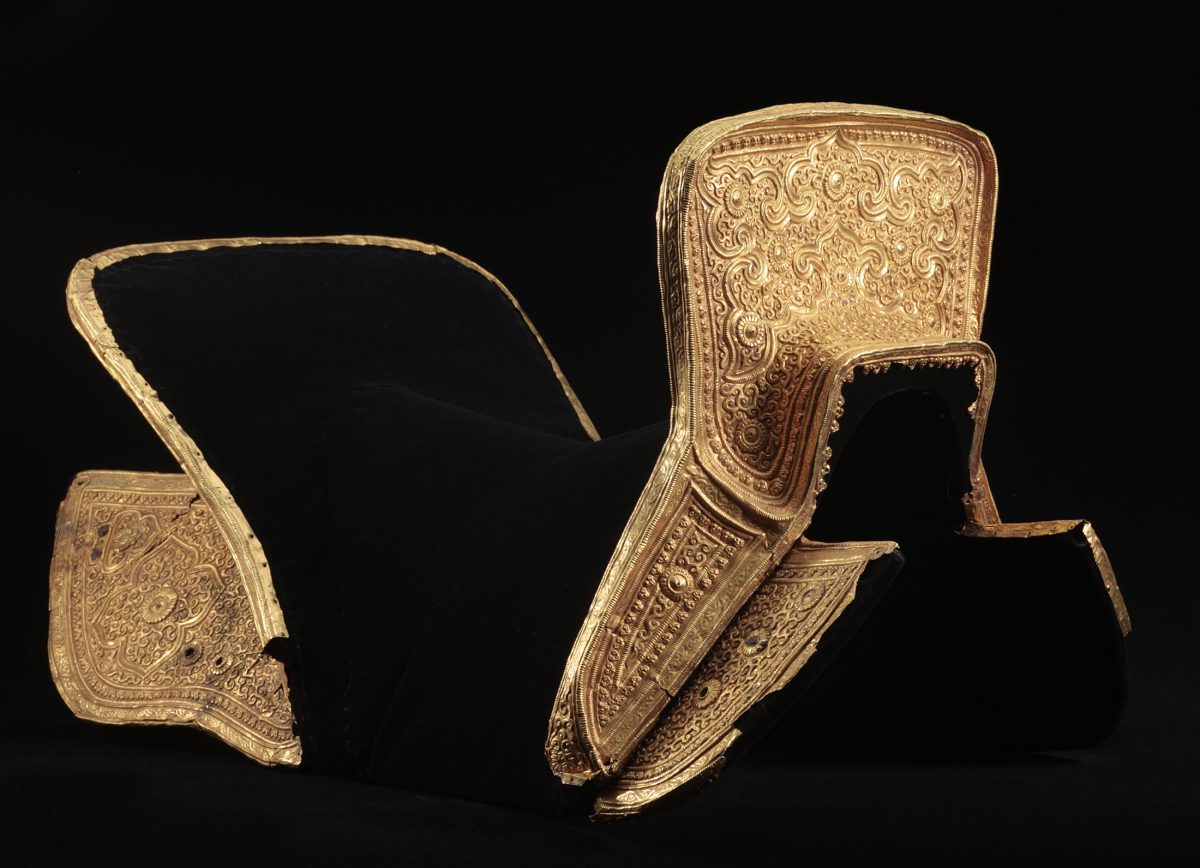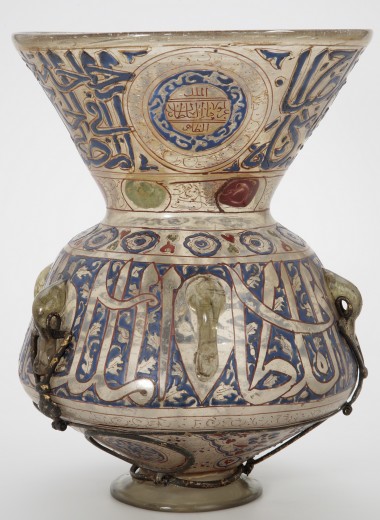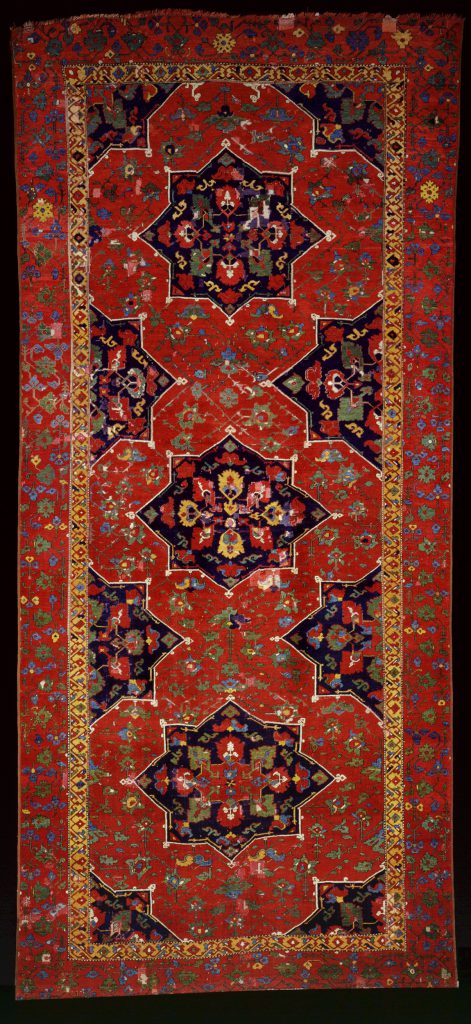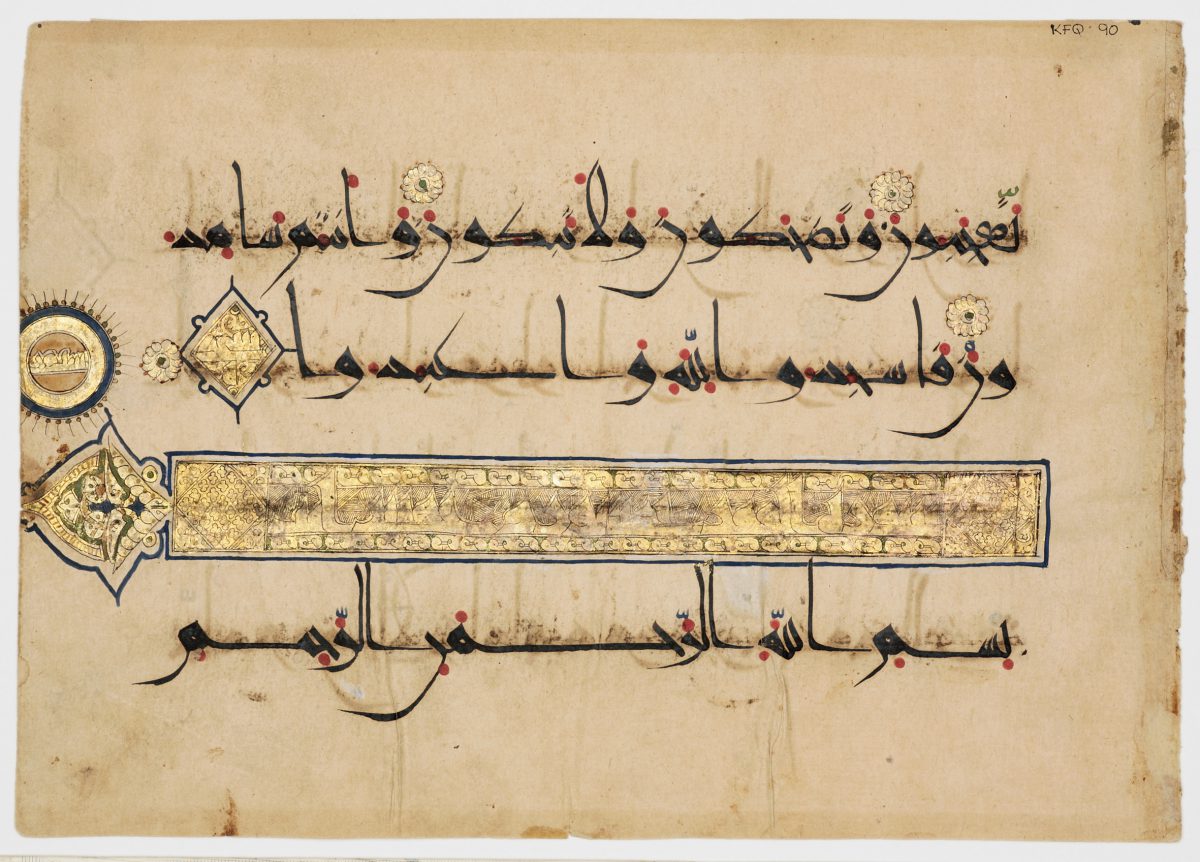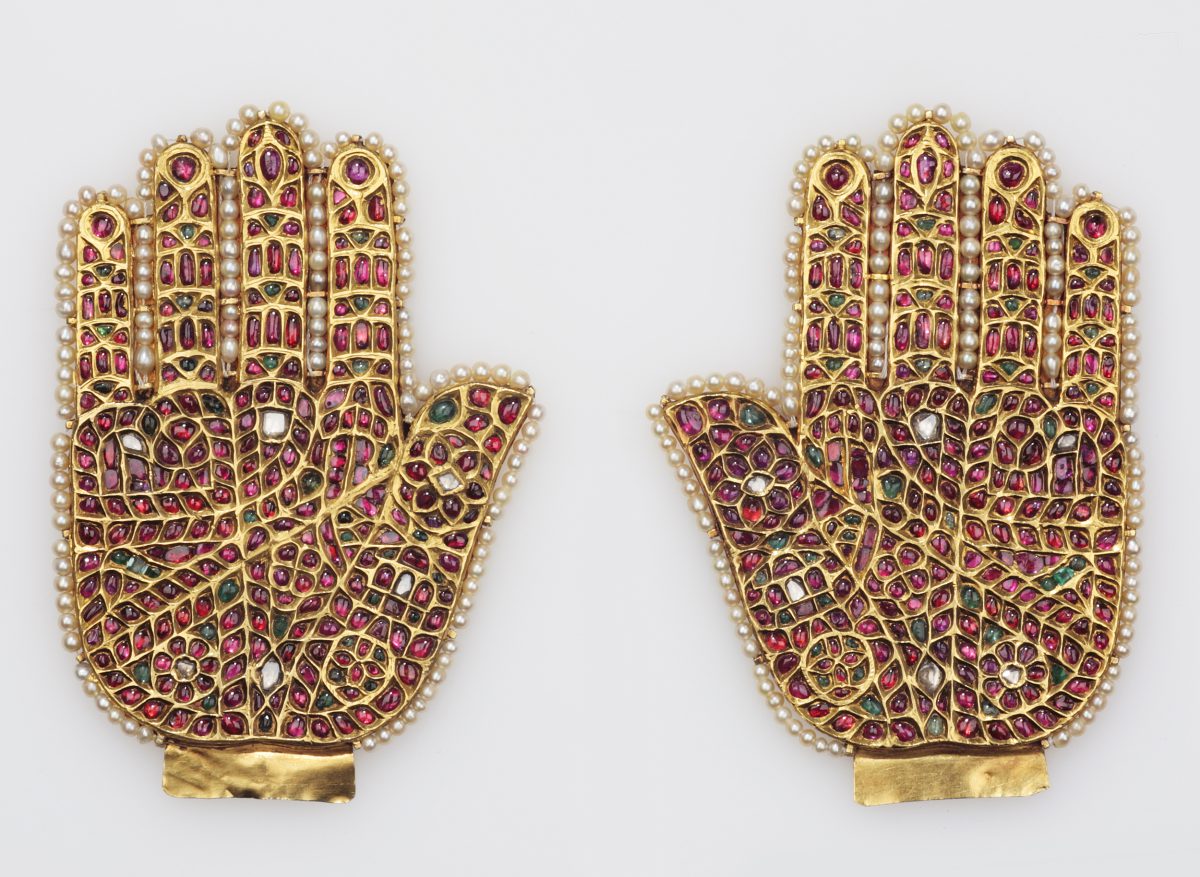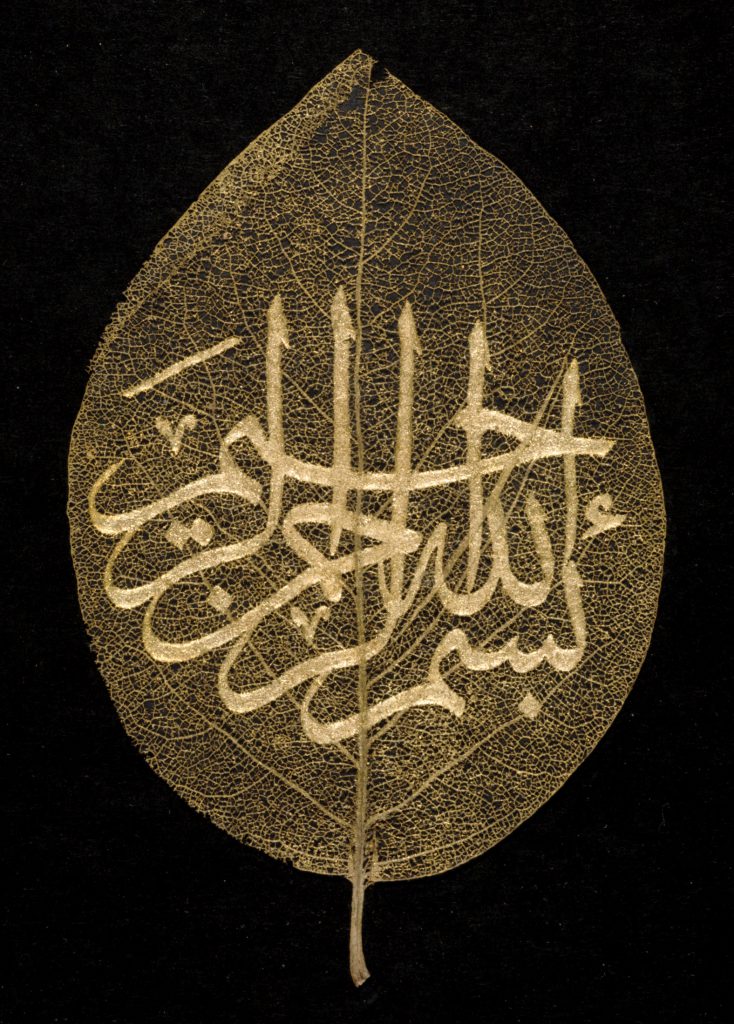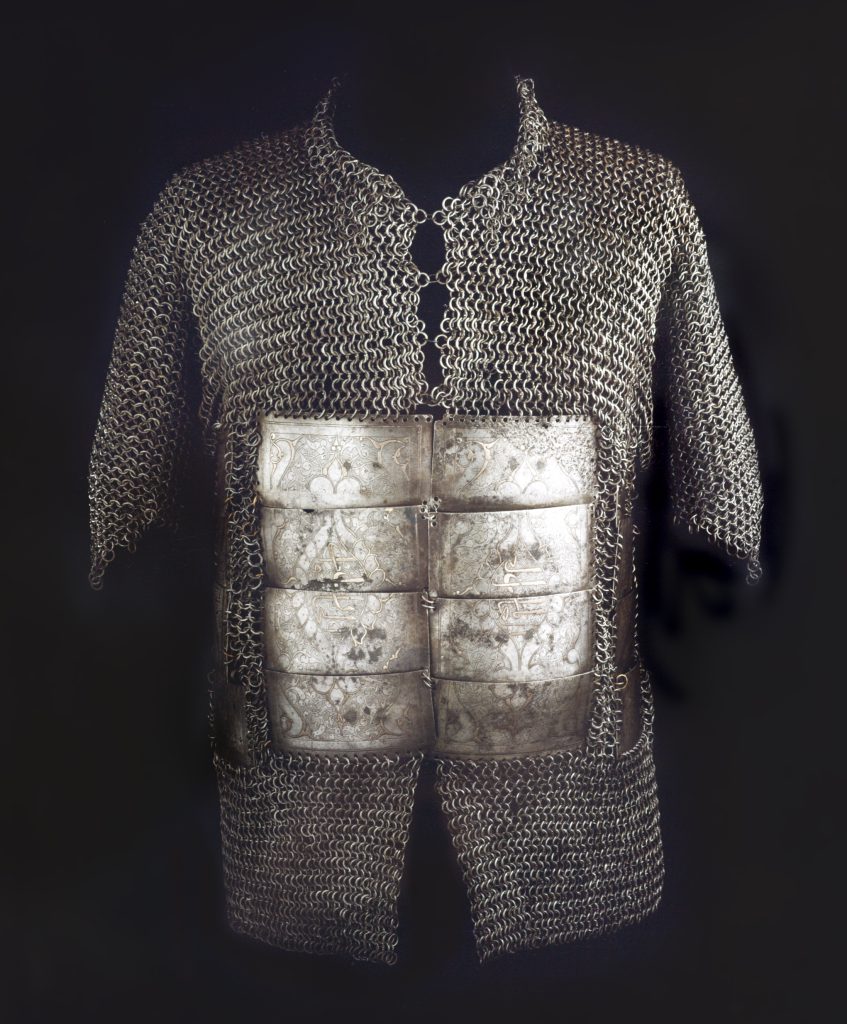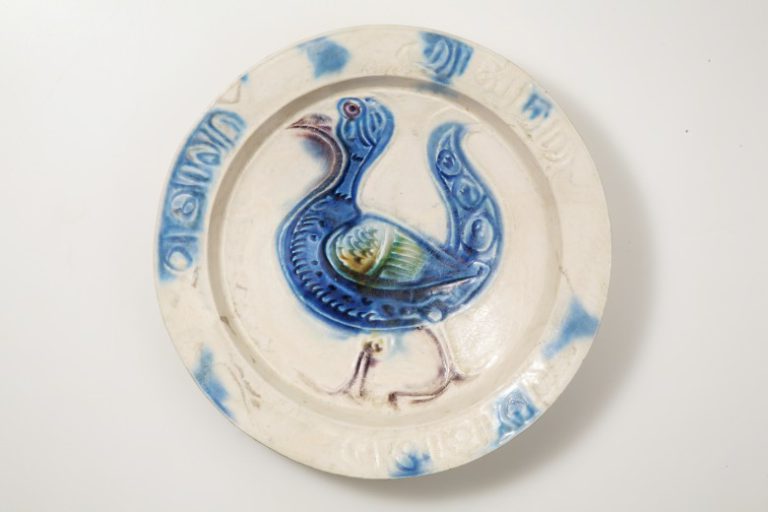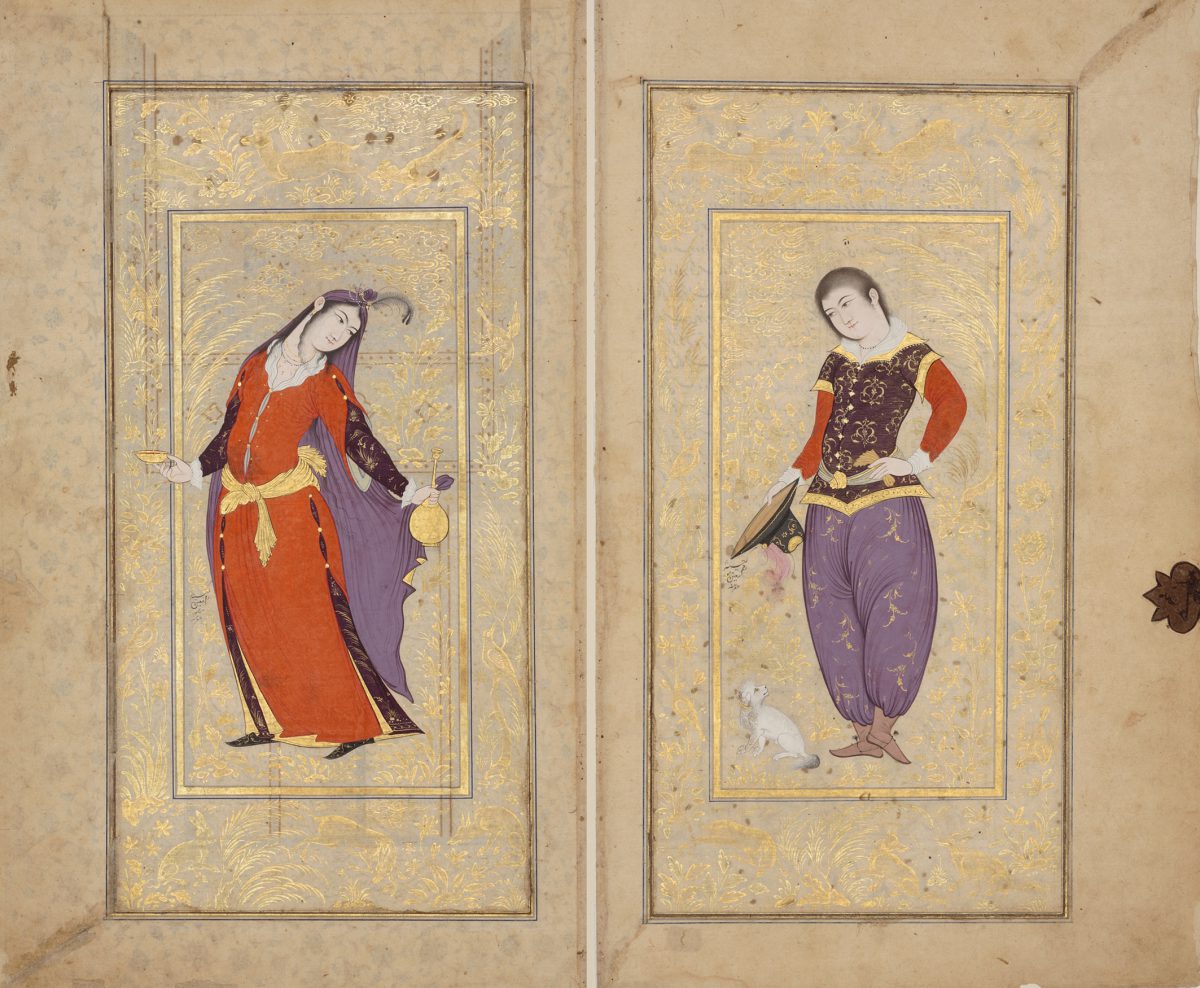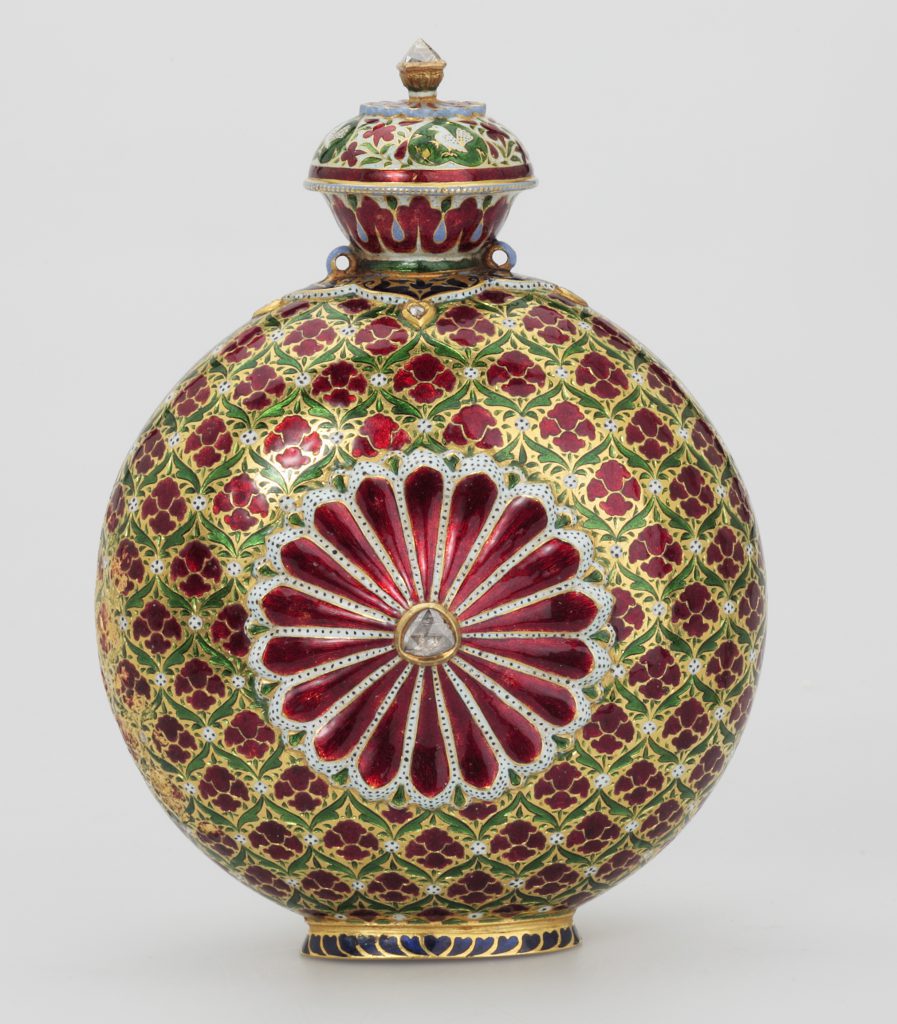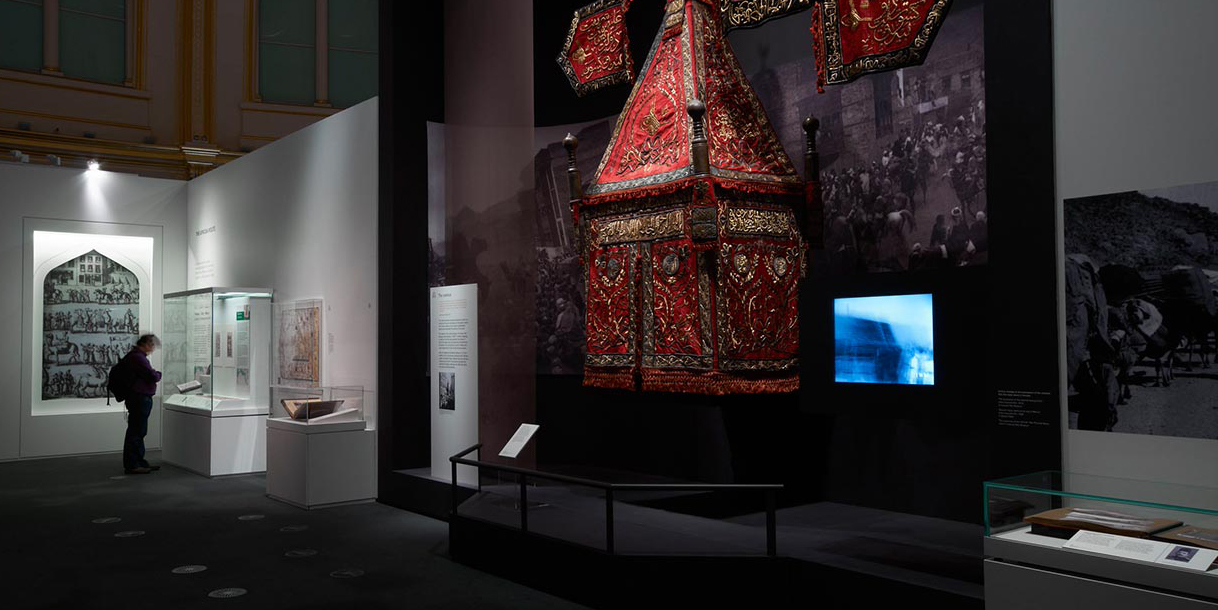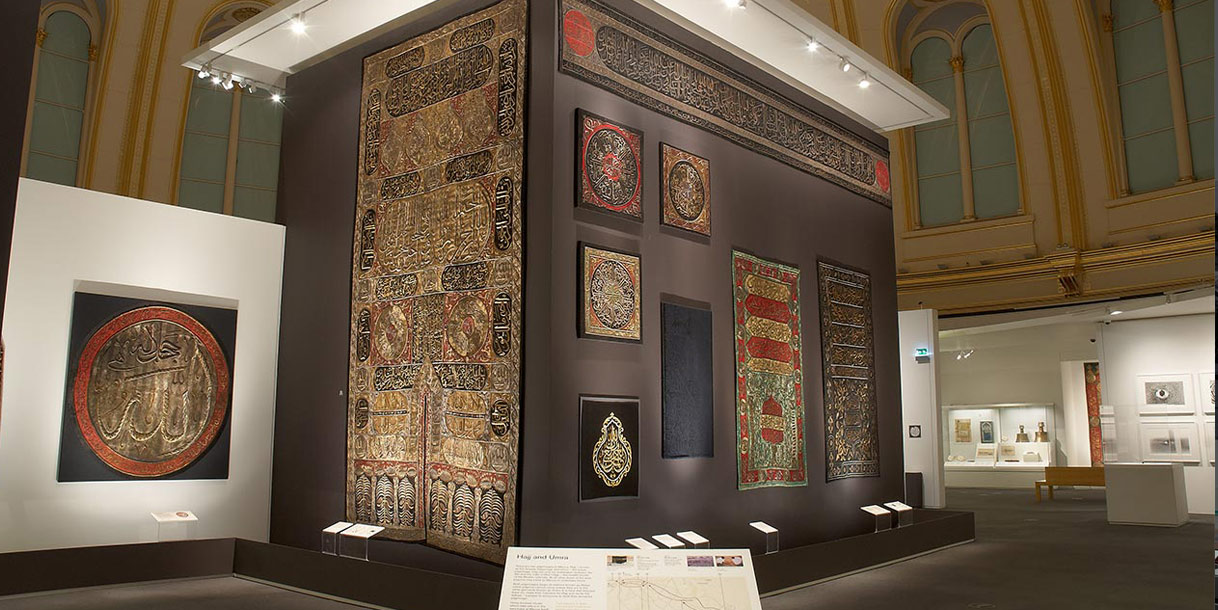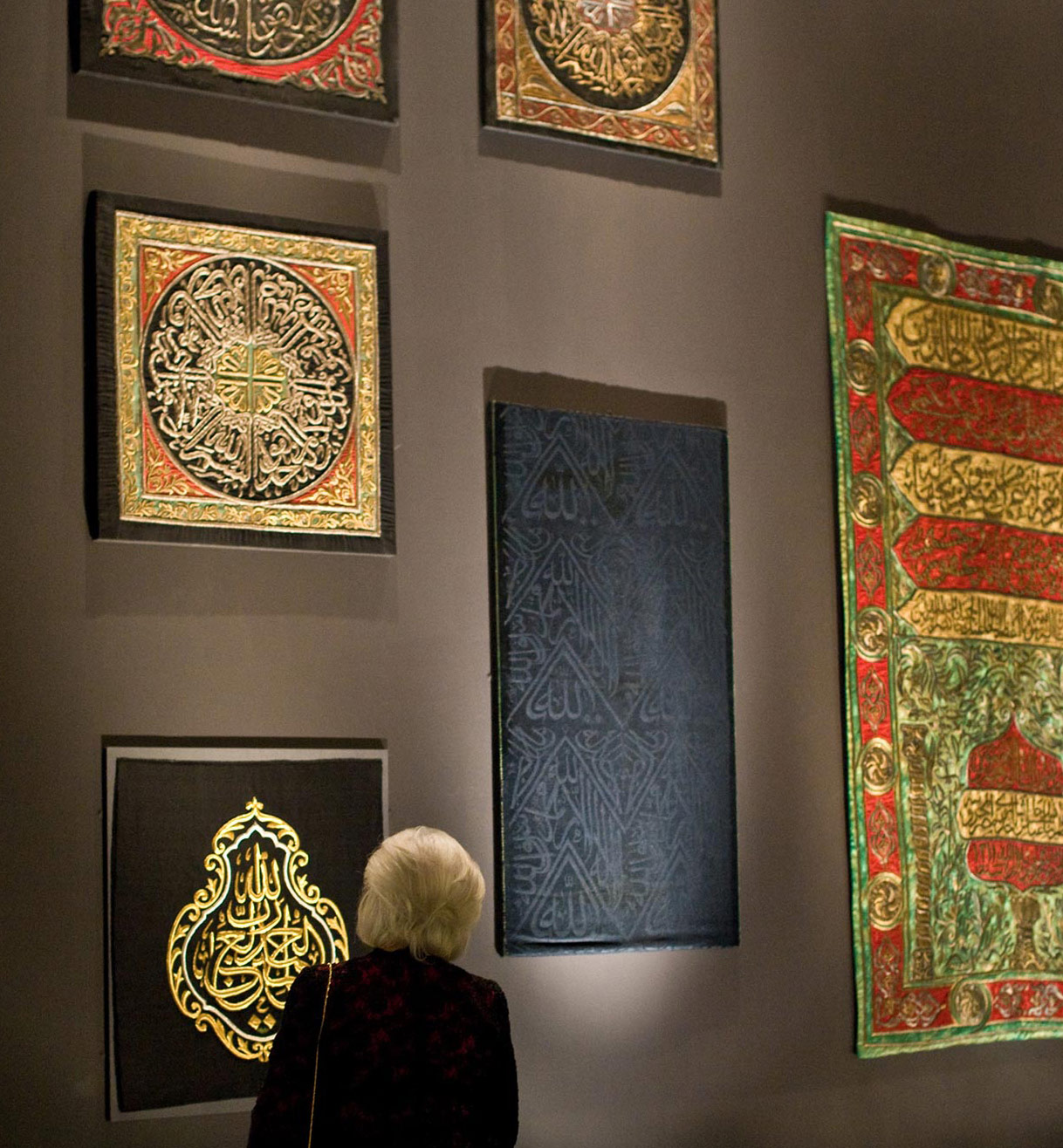-

Saddle Fittings and Horse Trappings
29.7cm (max height, as reconstructed)
circa 1200 AD Central Asia or western frontiers of China
-

Mosque Lamp
33 x 25cm
circa 1385 AD Egypt
-

Carpet with Star Medallions
430 x 196cm
late 15th or early 16th century Ushak, western Anatolia, Turkey
-

Single Folio from a Four-part Qur’an
23.9 x 33.8cm
Iran, Isfahan
-

Two ‘Hands of Fatimah’
l0.7 x 8.2cm
late 18th or early 19th century India, possibly Hyderabad (Deccan)
-

Calligraphic Composition
14.3 x 11.5cm
19th century Ottoman Turkey
-

Mail and Plate Shirt
86cm (maximum length)
late 15th or early 16th century Northern Caucasus
for the Persian or Ottoman market
-

Dish
6 x 29.7cm
circa 1200 AD Syria
-

Youth in European Dress and Young Woman with Indian Headdress, from a Shahnamah
35.5 x 21.3cm (page); 29.5 x 15cm (within outer gold rules)
manuscript dated 2 Dhu'l-qa‘dah 1058 (18 December 1648) Isfahan, Iran
-

Small Flask
13.6cm (height)
early 19th century Jaipur, India
Hajj & The Art Of Pilgrimage (700-2000)
The Khalili Collections include one of the largest and most important groups of works relating to hajj and the arts associated with it. The collection is the largest in private hands and ranks in importance alongside that of the Topkapi Saray Museum in Istanbul. The works range in date from the Umayyad period to the late-20th century spanning 1400 years of Islamic history and come from all over the Muslim world. They include scientific instruments, coins, manuscripts, paintings, textiles, photographs, prints and postcards, as well as rare printed books and historical documents. They have been collected with the aim of providing a comprehensive overview of the subject, illustrating the various religious and artistic aspects of pilgrimage to the holy cities of Islam and the cosmopolitan nature of hajj. This collection contains over 5000 objects including more then 300 textiles and many other related objects associated with Mecca and Medina.

